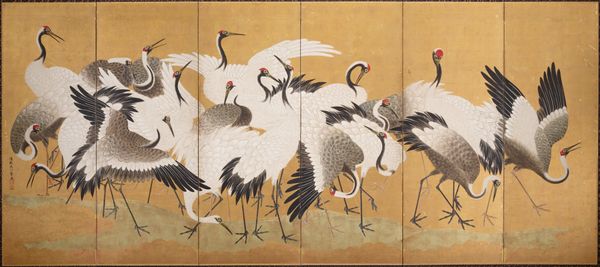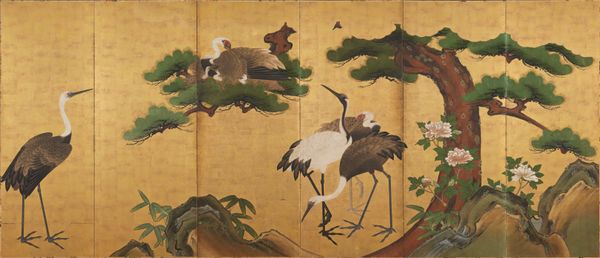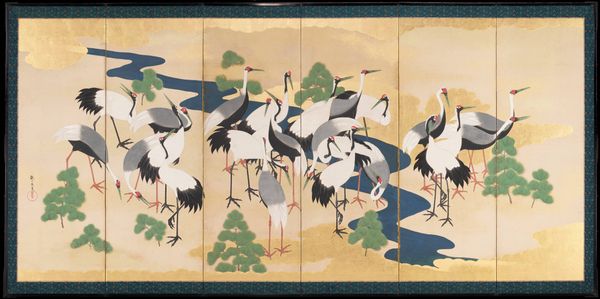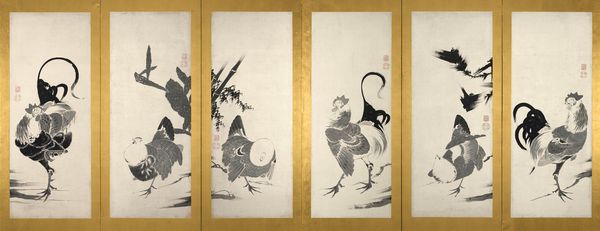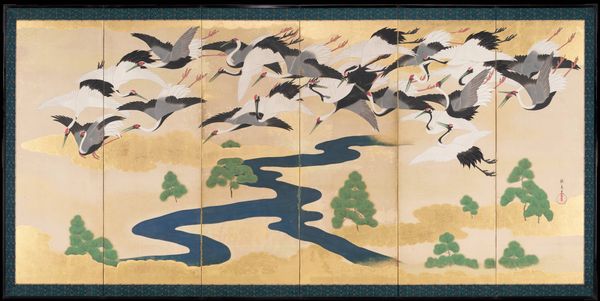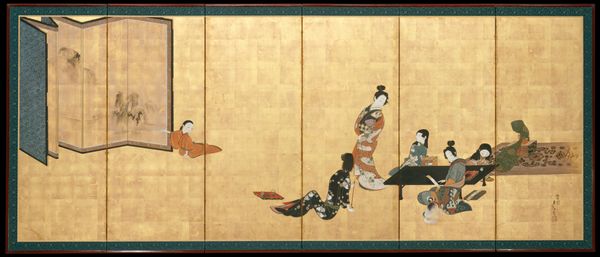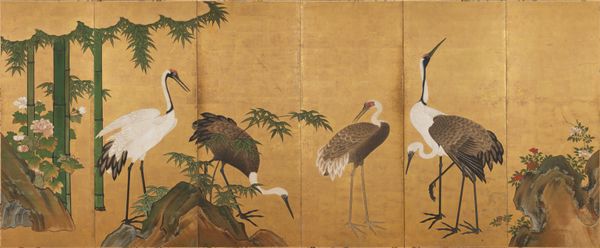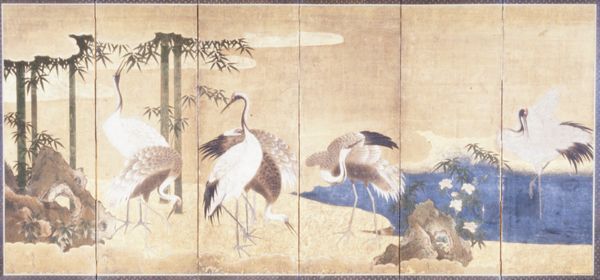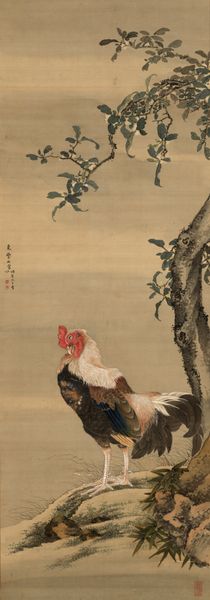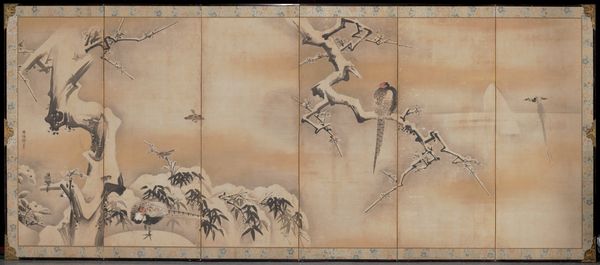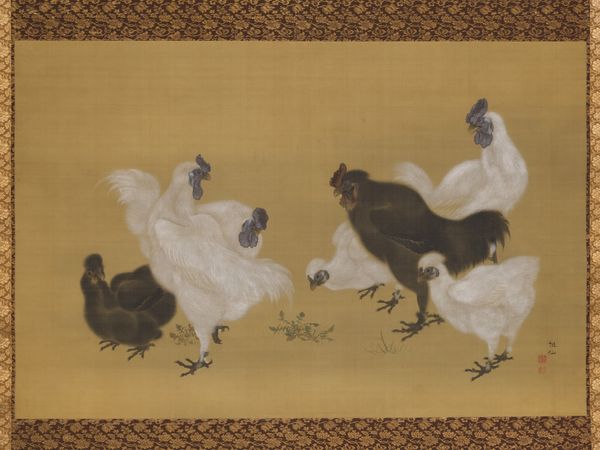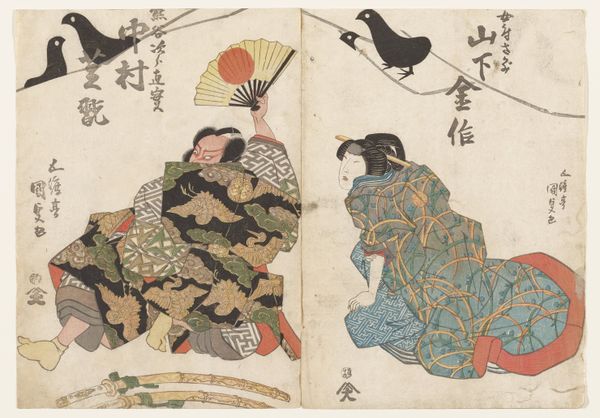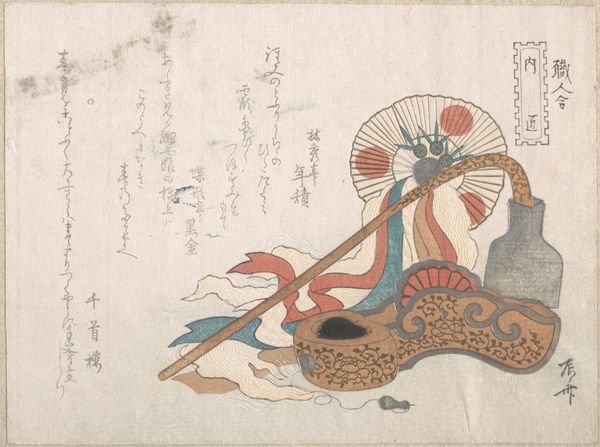![Flock of Cranes [right of a pair] by Ishida Yūtei](/_next/image?url=https%3A%2F%2Fd2w8kbdekdi1gv.cloudfront.net%2FeyJidWNrZXQiOiAiYXJ0ZXJhLWltYWdlcy1idWNrZXQiLCAia2V5IjogImFydHdvcmtzL2MyOTNkZGU1LWQzOGQtNGJmZS1hYTFiLTJmNjZiNTRmZmVmYi9jMjkzZGRlNS1kMzhkLTRiZmUtYWExYi0yZjY2YjU0ZmZlZmJfZnVsbC5qcGciLCAiZWRpdHMiOiB7InJlc2l6ZSI6IHsid2lkdGgiOiAxOTIwLCAiaGVpZ2h0IjogMTkyMCwgImZpdCI6ICJpbnNpZGUifX19&w=3840&q=75)
tempera, painting, pendant
#
tempera
#
painting
#
asian-art
#
landscape
#
bird
#
ukiyo-e
#
japan
#
figuration
#
mural art
#
painting art
#
pendant
Dimensions: 62 1/4 × 139 1/2 in. (158.12 × 354.33 cm) (image)67 1/2 × 145 1/2 × 3/4 in. (171.45 × 369.57 × 1.91 cm) (outer frame)
Copyright: Public Domain
Editor: This gorgeous tempera painting, "Flock of Cranes," comes to us from 18th century Japan, courtesy of Ishida Yūtei. There's such vibrant energy in how the cranes are posed; they feel like they're on the verge of taking flight. How do you interpret the symbolism of these cranes, considering their cultural context? Curator: The choice of cranes isn’t accidental. In Japanese art, they often symbolize longevity, good fortune, and marital fidelity, powerful concepts in 18th-century Japanese society. Their presence can be seen as an aspiration, a visual mantra woven into the daily lives of those who viewed this piece, probably a member of the court or someone of high status, as these types of artworks adorned castles and wealthy residences. Editor: So, it’s not just a pretty picture; it's communicating certain values. Curator: Exactly. Consider how ukiyo-e traditions frequently focused on idealized beauty and pleasure, catering to a largely male audience, but a screen like this would serve as a constant reminder of different ideals within the domestic sphere. Are the values of longevity, family, and fortune inherently good, and who did they benefit most? Who was left out, whose experiences were not visible in elite artistic productions such as this one? These are important questions. Editor: That really makes me think about who had access to these types of artworks and how they might have reinforced existing power structures. Curator: And how that plays out even today in museums! Who feels welcomed, whose stories are amplified and celebrated versus silenced or overlooked? Editor: This definitely gives me a new perspective. I am really questioning whose gaze it was originally meant for. Curator: Right! Thinking critically about the socio-political contexts interwoven in artworks from the past enables us to foster richer and more inclusive encounters with the art of today.
Comments
minneapolisinstituteofart about 2 years ago
⋮
Ishida Yūtei was the teacher of Maruyama Ōkyo (1733–1795), the famous and influential champion of Western-influenced naturalism in Japan during the 18th century and founder of the Maruyama School. Although trained in the traditional Kano school methods, Yūtei was typical of Kano artists of his time in adopting an eclectic approach to painting. Here, he combined the monumentality and stylization associated with Kano painting with the repetition of a single theme often seen in Rinpa school painting. While Yūtei may have derived the postures of individual cranes from Kano instruction manuals, the idea of combining them all to depict an entire flock presages Ōkyo's interest in naturalism.
Join the conversation
Join millions of artists and users on Artera today and experience the ultimate creative platform.
